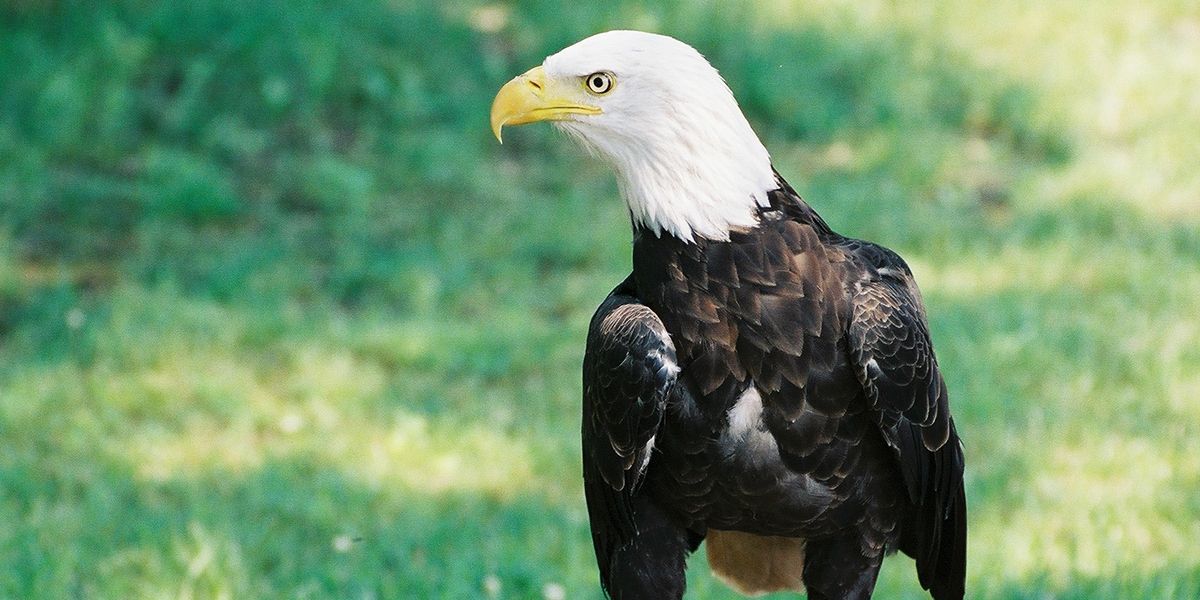GET THE SAFARI SCOOP!
Thank you for contacting us.
We will get back to you as soon as possible.
We will get back to you as soon as possible.
Oops, there was an error sending your message.
Please try again later.
Please try again later.
Northern Bald Eagle
A bald eagle’s white head may make it look bald. But actually the name comes from an old English word, “balde,” meaning white. Bald eagles were on the brink of extinction because of hunting and pollution. But laws created almost 40 years ago have helped protect them, and they’ve made a comeback.
These powerful birds of prey use their talons to fish, but they get many of their meals by scavenging carrion or stealing the kills of other animals. They live near water and favour coasts and lakes where fish are plentiful, though they will also snare and eat small mammals.
Eagle nests are called aeries (AIR-ees). Bald eagles build their nests at the very top of tall tress so the eggs will be safe. Some parents come back year after year to the same nest, adding more sticks, twigs, and grass each time. Babies, called eaglets, are born light gray then turn brown. When they are four to fie years old, they develop their normal white heads and tails.
These powerful birds of prey use their talons to fish, but they get many of their meals by scavenging carrion or stealing the kills of other animals. They live near water and favour coasts and lakes where fish are plentiful, though they will also snare and eat small mammals.
Eagle nests are called aeries (AIR-ees). Bald eagles build their nests at the very top of tall tress so the eggs will be safe. Some parents come back year after year to the same nest, adding more sticks, twigs, and grass each time. Babies, called eaglets, are born light gray then turn brown. When they are four to fie years old, they develop their normal white heads and tails.
Fun Facts
The Bald Eagle is the national bird of the United States. The Bald Eagle was added to the list of endangered species in 1967 and was removed from the endangered species list in 2007.

scientific classification
Kingdom
Animalia
Phylum
Chordata
Class
Aves
Order
Accipitriformes
Family
Accipitridae
Genus
Haliaeetus
Species
Haliaeetus Leucocephalus
Where to find us
Safari Niagara is home to 9 rehabilitated Northern Bald Eagles. After their rehabilitation process they were deemed non-releasable and were facing uncertainty and possible euthanization, Safari Niagara has made our home “their home”. The Bald Eagle exhibit can be located between Tram Stops #2 and #3 on the opposite side of the path as the silent forest.
did you know?
The female is the larger of the sexes but both are still over 1 metre (3 feet) tall when full grown with wingspans of up to 2.3 metres (7.5 feet).
A Bald Eagle’s eye is almost as large as humans but they can see at least four times more defined. The eagle can identify a moving rabbit at 1.6 kms away (1 mile).
Air passes through an eagle’s lungs twice with each breathing cycle – twice that of mammals. Air passes through the lungs and on into the air sacs before moving back through the lungs and out again.
Park Hours
- Mon - Sun
- Closed
Office Hours
- Mon - Fri
- -
- Sat - Sun
- Closed


© 2024
Copyright Safari Niagara. All Rights Reserved.

